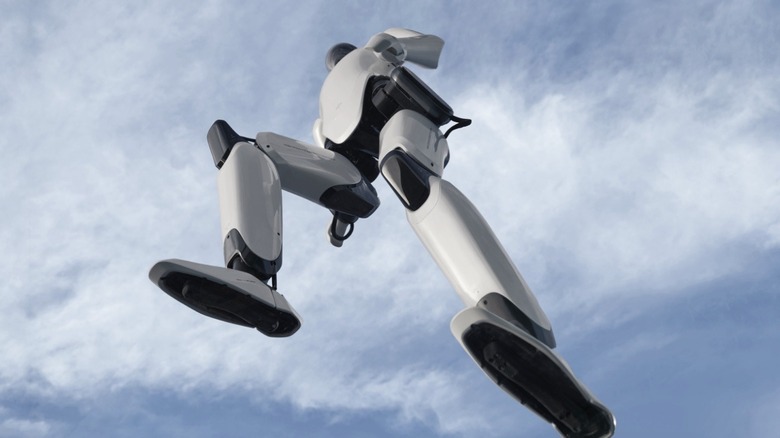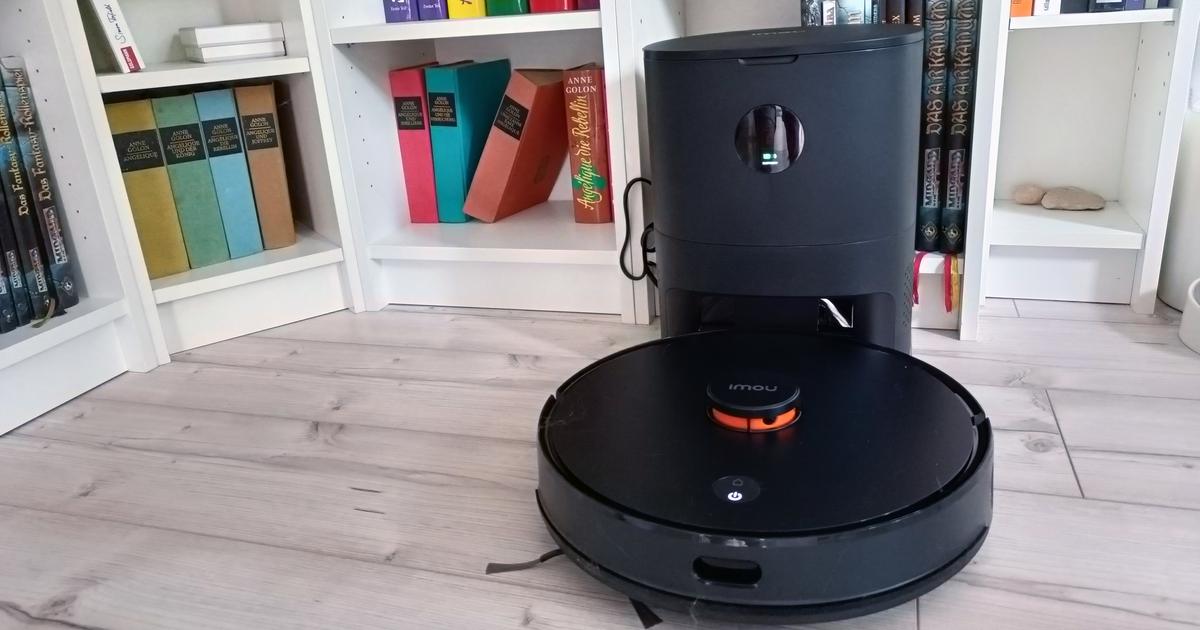Tech News
The robot that learns household chores, like taking out the garbage, by watching humans

-
/home/u233641744/domains/voonze.com/public_html/wp-content/plugins/mvp-social-buttons/mvp-social-buttons.php on line 120
- /home/u233641744/domains/voonze.com/public_html/wp-content/plugins/mvp-social-buttons/mvp-social-buttons.php on line 123
- /home/u233641744/domains/voonze.com/public_html/wp-content/plugins/mvp-social-buttons/mvp-social-buttons.php on line 126
- /home/u233641744/domains/voonze.com/public_html/wp-content/plugins/mvp-social-buttons/mvp-social-buttons.php on line 129
https://voonze.com/the-robot-that-learns-household-chores-like-taking-out-the-garbage-by-watching-humans/&t=
Warning: Undefined variable $post in /home/u233641744/domains/voonze.com/public_html/wp-content/plugins/mvp-social-buttons/mvp-social-buttons.php on line 120
Warning: Attempt to read property "ID" on null in /home/u233641744/domains/voonze.com/public_html/wp-content/plugins/mvp-social-buttons/mvp-social-buttons.php on line 120
The robot that learns household chores, like taking out the garbage, by watching humans', 'facebookShare', 'width=626,height=436'); return false;" title="Share on Facebook">
The robot that learns household chores, like taking out the garbage, by watching humans &url=
Warning: Undefined variable $post in /home/u233641744/domains/voonze.com/public_html/wp-content/plugins/mvp-social-buttons/mvp-social-buttons.php on line 123
Warning: Attempt to read property "ID" on null in /home/u233641744/domains/voonze.com/public_html/wp-content/plugins/mvp-social-buttons/mvp-social-buttons.php on line 123
https://voonze.com/the-robot-that-learns-household-chores-like-taking-out-the-garbage-by-watching-humans/', 'twitterShare', 'width=626,height=436'); return false;" title="Tweet This Post">
https://voonze.com/the-robot-that-learns-household-chores-like-taking-out-the-garbage-by-watching-humans/&media=
Warning: Undefined variable $post in /home/u233641744/domains/voonze.com/public_html/wp-content/plugins/mvp-social-buttons/mvp-social-buttons.php on line 126
Warning: Attempt to read property "ID" on null in /home/u233641744/domains/voonze.com/public_html/wp-content/plugins/mvp-social-buttons/mvp-social-buttons.php on line 126
https://voonze.com/wp-content/uploads/2022/07/1658501204_The-robot-that-learns-household-chores-like-taking-out-the.jpg&description=
Warning: Undefined variable $post in /home/u233641744/domains/voonze.com/public_html/wp-content/plugins/mvp-social-buttons/mvp-social-buttons.php on line 126
Warning: Attempt to read property "ID" on null in /home/u233641744/domains/voonze.com/public_html/wp-content/plugins/mvp-social-buttons/mvp-social-buttons.php on line 126
The robot that learns household chores, like taking out the garbage, by watching humans', 'pinterestShare', 'width=750,height=350'); return false;" title="Pin This Post">
The robot that learns household chores, like taking out the garbage, by watching humans&BODY=I found this article interesting and thought of sharing it with you. Check it out:
Warning: Undefined variable $post in /home/u233641744/domains/voonze.com/public_html/wp-content/plugins/mvp-social-buttons/mvp-social-buttons.php on line 129
Warning: Attempt to read property "ID" on null in /home/u233641744/domains/voonze.com/public_html/wp-content/plugins/mvp-social-buttons/mvp-social-buttons.php on line 129
https://voonze.com/the-robot-that-learns-household-chores-like-taking-out-the-garbage-by-watching-humans/">
For some time now, there has been talk on the internet of the robot revolution, something that could be said to have started in the last century with the computer age, but it is in recent years that scientists have achieved amazing achievements, such as this robot that is capable of programming itself and learning different activities just by observing the way humans do it.
The shocking thing is that, until now, if a developer wanted an automaton to perform a specific action, he had to go to his computer and record the commands as lines of code written in a computer language that the machine could assimilate.
But with this new innovation, robots could be handled in the world in a very similar way as people do today, because it is intended that just as babies and children do, machines learn to sweep, sit and do other types of activities by observing humans.
It should be clarified that in the world of technology, artificial intelligences and all kinds of robots have been created through reinforcement learning, which consists of training systems by means of imagesbut that the imitation strategy be implemented in which control of a machine is taken as if it were a student and the respective processes are taught, It’s totally new to computer science.
Put that way, a research team at Carnegie Mellon University has developed a much more intuitive method that effectively trains and programs systems just by watching what humans do. It is an algorithm called WHIRL that searches train to robotic teams through tutorial videos.
For the demonstrations they have used an ordinary robotic arm, but it has learned to carry out more than 20 basic domestic activities, such as opening and closing drawers, refrigerators, microwaves or removing garbage from containers. The interesting thing here is that the goal is to implement this algorithm in much more complex systems.
The Carnegie Mellon researchers state that, “Imitation is a good way to learn, and getting robots to train fully by directly observing humans remains an unsolved problem in the field, but this work takes an important step toward getting there.” that chance.”
Although for many these types of developments seem to be taken from a dystopian science fiction movie, it is a fact that implement this algorithm and other types of systems in robotic elements could improve the daily lives of many peoplesince initially it is planned to bring these new innovations to the medical care sector, for example in nursing homes.
Finally, the robotic elements with the new WHIRL algorithm will not need another kind of programming or additional computational complement, since the elements will focus solely on learning to perform a specific task correctly, even if this takes several hours to complete.
However, the university research team was emphatic in ensuring that the learning method of this algorithm is not identical to that of a human beingsince the systems will have to be programmed according to their own design constraints.
:
-
/home/u233641744/domains/voonze.com/public_html/wp-content/plugins/mvp-social-buttons/mvp-social-buttons.php on line 120
- /home/u233641744/domains/voonze.com/public_html/wp-content/plugins/mvp-social-buttons/mvp-social-buttons.php on line 123
- /home/u233641744/domains/voonze.com/public_html/wp-content/plugins/mvp-social-buttons/mvp-social-buttons.php on line 126
- /home/u233641744/domains/voonze.com/public_html/wp-content/plugins/mvp-social-buttons/mvp-social-buttons.php on line 129
https://voonze.com/the-robot-that-learns-household-chores-like-taking-out-the-garbage-by-watching-humans/&t=
Warning: Undefined variable $post in /home/u233641744/domains/voonze.com/public_html/wp-content/plugins/mvp-social-buttons/mvp-social-buttons.php on line 120
Warning: Attempt to read property "ID" on null in /home/u233641744/domains/voonze.com/public_html/wp-content/plugins/mvp-social-buttons/mvp-social-buttons.php on line 120
The robot that learns household chores, like taking out the garbage, by watching humans', 'facebookShare', 'width=626,height=436'); return false;" title="Share on Facebook">
The robot that learns household chores, like taking out the garbage, by watching humans &url=
Warning: Undefined variable $post in /home/u233641744/domains/voonze.com/public_html/wp-content/plugins/mvp-social-buttons/mvp-social-buttons.php on line 123
Warning: Attempt to read property "ID" on null in /home/u233641744/domains/voonze.com/public_html/wp-content/plugins/mvp-social-buttons/mvp-social-buttons.php on line 123
https://voonze.com/the-robot-that-learns-household-chores-like-taking-out-the-garbage-by-watching-humans/', 'twitterShare', 'width=626,height=436'); return false;" title="Tweet This Post">
https://voonze.com/the-robot-that-learns-household-chores-like-taking-out-the-garbage-by-watching-humans/&media=
Warning: Undefined variable $post in /home/u233641744/domains/voonze.com/public_html/wp-content/plugins/mvp-social-buttons/mvp-social-buttons.php on line 126
Warning: Attempt to read property "ID" on null in /home/u233641744/domains/voonze.com/public_html/wp-content/plugins/mvp-social-buttons/mvp-social-buttons.php on line 126
https://voonze.com/wp-content/uploads/2022/07/1658501204_The-robot-that-learns-household-chores-like-taking-out-the.jpg&description=
Warning: Undefined variable $post in /home/u233641744/domains/voonze.com/public_html/wp-content/plugins/mvp-social-buttons/mvp-social-buttons.php on line 126
Warning: Attempt to read property "ID" on null in /home/u233641744/domains/voonze.com/public_html/wp-content/plugins/mvp-social-buttons/mvp-social-buttons.php on line 126
The robot that learns household chores, like taking out the garbage, by watching humans', 'pinterestShare', 'width=750,height=350'); return false;" title="Pin This Post">
The robot that learns household chores, like taking out the garbage, by watching humans&BODY=I found this article interesting and thought of sharing it with you. Check it out:
Warning: Undefined variable $post in /home/u233641744/domains/voonze.com/public_html/wp-content/plugins/mvp-social-buttons/mvp-social-buttons.php on line 129
Warning: Attempt to read property "ID" on null in /home/u233641744/domains/voonze.com/public_html/wp-content/plugins/mvp-social-buttons/mvp-social-buttons.php on line 129
https://voonze.com/the-robot-that-learns-household-chores-like-taking-out-the-garbage-by-watching-humans/">






